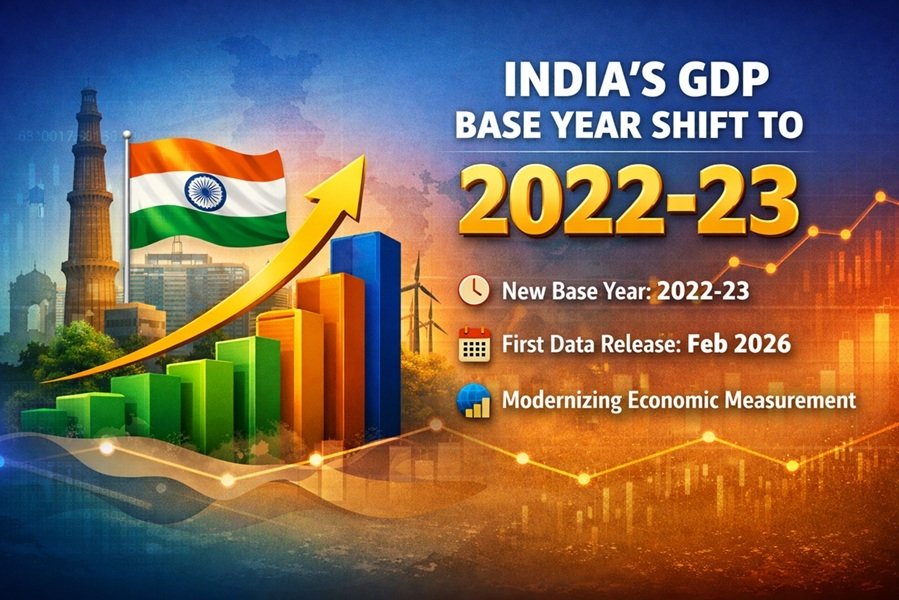
Introduction
The introduction of e-invoicing under the Goods and Services Tax (GST) regime in India has revolutionized the way businesses handle invoices. E-invoicing ensures greater transparency, minimizes tax evasion, and automates the invoicing process. The government has been gradually expanding its scope, and starting from April 1, 2025, businesses with an Annual Aggregate Turnover (AATO) of ₹10 crore or more must mandatorily generate e-invoices. This is a significant change from the previous threshold of ₹100 crore, affecting a vast number of small and medium-sized enterprises (SMEs).
This comprehensive guide explores the e-invoicing system, its history, legal framework, benefits, exemptions, the detailed process of e-invoice generation, available tools, challenges, its impact on businesses, and a step-by-step guide on how to register and generate e-invoices on the GST e-invoice portal.
Read This: What’s Changing in GST E-Invoicing from April 2025?
What is E-Invoicing?
E-invoicing, or electronic invoicing, is a system in which Business-to-Business (B2B) invoices are electronically authenticated by the GST Network (GSTN) before being used for transactions. Each invoice is assigned a Unique Invoice Reference Number (IRN) and a digitally signed QR code by the Invoice Registration Portal (IRP). This ensures that all invoices are standardized, reducing fraud and errors.
History of E-Invoicing in India
The concept of e-invoicing was introduced in India to enhance compliance and streamline GST filings. The GST Council approved the e-invoice standard in its 37th meeting on September 20, 2019. The implementation took place in phases:
- October 1, 2020: Applicable to businesses with an AATO exceeding ₹500 crore.
- January 1, 2021: Extended to businesses with an AATO between ₹100 crore and ₹500 crore.
- April 1, 2025: The threshold is being lowered to ₹10 crore, expanding the scope of e-invoicing to a much larger number of businesses.
Legal Framework for E-Invoicing
The legal foundation for e-invoicing is provided by the GST Act and subsequent amendments. Key legal aspects include:
- Rule 48(4) of the CGST Rules, 2017: Mandates e-invoicing for notified categories of taxpayers.
- Notification No. 68/2019 – Central Tax: Specifies the classes of taxpayers required to comply with e-invoicing.
- Recent Amendments: Expand the scope of e-invoicing to businesses with lower turnover thresholds.
Failure to comply with e-invoicing regulations can result in penalties, including fines and restrictions on input tax credit (ITC) claims.
Documents Covered under E-Invoicing
The following documents are required to be reported under the e-invoicing system:
- GST invoices (B2B transactions and exports)
- Credit notes
- Debit notes
- Other prescribed documents
Exemptions from E-Invoicing
Certain businesses and transactions are exempt from e-invoicing, including:
- Special Economic Zone (SEZ) units
- Insurance and banking companies
- Goods and passenger transportation services
- Non-Banking Financial Companies (NBFCs)
- Multiplex cinema admissions
- Businesses with an AATO below ₹10 crore (effective April 2025)
How to Register on the E-Invoice Portal
To generate e-invoices, businesses need to register on the e-invoice portal. Follow these steps to register:
- Visit the E-Invoice Portal: Go to the official e-invoice registration portal at https://einvoice1.gst.gov.in.
- Click on ‘Registration’: On the homepage, select the ‘e-Invoice Registration’ option.
- Enter GSTIN: Provide your GST Identification Number (GSTIN) and complete the CAPTCHA verification.
- Authenticate with OTP: The system will send an OTP to the registered mobile number and email linked to the GSTIN. Enter the OTP to proceed.
- Create Username & Password: Set up a unique username and password for logging into the e-invoice portal.
- Login to Dashboard: After successful registration, log in using the newly created credentials.
How to Generate an E-Invoice
Once registered, businesses can generate e-invoices using the following steps:
- Prepare Invoice: Create an invoice in your ERP/accounting software as per the prescribed e-invoicing format.
- Upload to IRP: Submit the invoice details to the Invoice Registration Portal (IRP) through API, bulk upload tool, or manual entry.
- Validation & IRN Generation: The IRP validates the details and assigns a Unique Invoice Reference Number (IRN).
- QR Code Generation: The portal generates a digitally signed QR code for authentication.
- Download and Use: The final e-invoice with the IRN and QR code is returned to the taxpayer and must be shared with the buyer.
- Auto-Population in GST Returns: The invoice details automatically reflect in GST returns (GSTR-1) and the e-way bill system.
Benefits of E-Invoicing
E-invoicing offers several advantages for businesses and the government:
- Improved Tax Compliance: Automated reporting reduces tax evasion and errors in GST returns.
- Seamless ITC Claims: Real-time invoice verification ensures accurate Input Tax Credit (ITC) claims.
- Reduced Errors and Fraud: Standardized invoices minimize discrepancies and fraudulent transactions.
- Efficient Business Operations: Reduces paperwork, streamlines processes, and enhances efficiency.
- Interoperability: E-invoices can be easily integrated with various accounting and ERP systems.
Tools Available for E-Invoicing
The government has provided multiple tools to facilitate e-invoicing:
- API Integration: Allows businesses to link their ERP software with the e-invoicing system.
- GePP Tool: The GST E-Invoice Preparing and Printing (GePP) tool for preparing invoices.
- Bulk Upload Tool: Enables large-scale invoice reporting.
- Mobile App: Allows invoice generation on the go.
Common Challenges in E-Invoicing Implementation
Despite its benefits, businesses face several challenges in adopting e-invoicing:
- Technical Integration: Businesses must update their ERP systems to integrate with the IRP.
- Training and Awareness: Employees need training on the new system.
- System Downtime and Errors: Occasional issues with the IRP can cause delays.
- Initial Setup Costs: SMEs may face additional costs in upgrading their accounting software.
Impact of E-Invoicing on Businesses
The expansion of e-invoicing to businesses with an AATO of ₹10 crore or more will have a significant impact:
- SMEs Must Adapt: Many small businesses will need to upgrade their systems and processes.
- Reduced Tax Evasion: Greater transparency in transactions.
- Improved GST Compliance: Faster ITC processing and reduced mismatches.
Conclusion
E-invoicing is a transformative step in India’s GST framework, ensuring transparency, reducing fraud, and automating compliance. With the upcoming changes from April 1, 2025, businesses must prepare by upgrading their systems, training staff, and ensuring timely compliance. As technology advances, e-invoicing will play a crucial role in making India’s tax system more efficient and business-friendly.
Disclaimer
This article is for informational and educational purposes only. It does not constitute legal, tax, or financial advice. Readers are advised to consult professional tax advisors or refer to official GST notifications for specific guidance regarding e-invoicing compliance.






